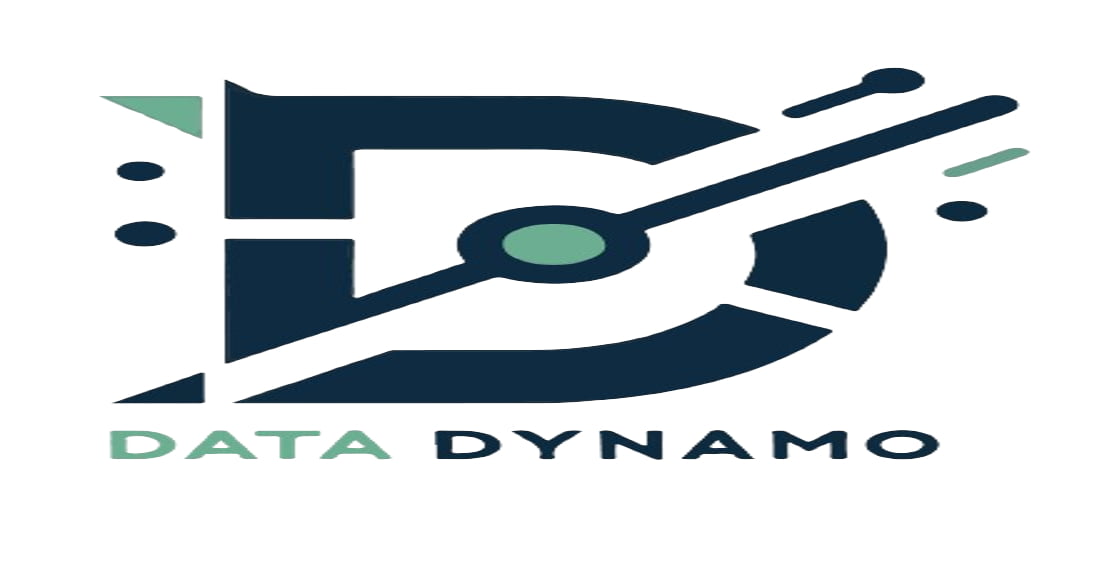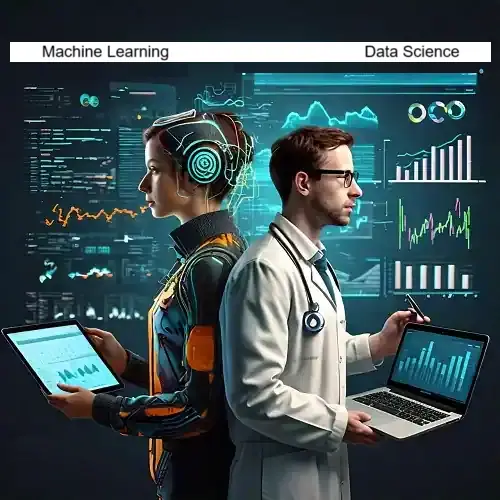
DeepSeek R1: The Game-Changer in AI? A Bold Comparison with ChatGPT, Gemini, and Meta
Table of Contents
Overview DeepSeek R1: The Game-Changer in AI? A Bold Comparison with ChatGPT, Gemini, and Meta
Our work, lives, and interactions have been transformed by artificial intelligence (AI). Among the pathfinder of this age are models include Meta AI, Gemini (Google DeepMind), and ChatGPT (OpenAI). Every one has pushed the envelope of generative artificial intelligence in their unique manner. But a fresh moniker has arrived, promising to upend things: DeepSeek R1.
DeepSeek R1 is not only another artificial intelligence model; it comes from China’s active tech scene. It is being heralded as a possible game-changer capable of upsetting the quo. We will investigate in this extensive blog post why DeepSeek R1 is attracting interest, what distinguishes it from other leaders including ChatGPT, Gemini, and Meta AI.
Let we begin.
What is DeepSeek R1?

Designed by Chinese startup DeepSeek AI, DeepSeek R1 is a sophisticated generative artificial intelligence model. Unlike conventional models mostly dependent on supervised learning, DeepSeek R1 presents a novel training approach based on extensive reinforcement learning. This method lets the model manage challenging reasoning, problem-solving, and technical computations like mathematics and coding with very great accuracy.
2.DeepSeek R1 stands out mostly for its ability to provide cost-effective performance while also delivering modern capability. Startups, researchers, and small companies seeking strong AI solutions without the high resource needs connected with models like OpenAI’s GPT series or Google’s Gemini find this unusual mix especially interesting. Its open-source character also makes it a flexible instrument for a broad spectrum of uses, therefore encouraging innovation and cooperation between many sectors and areas.
Key Features of DeepSeek R1
1. Reinforcement Learning-Based Training
DeepSeek R1 avoids early stages’ conventional dependence on supervised fine-tuning. Rather, it uses reinforcement learning to enable natural thinking capacity. This not only makes the model more flexible for fresh data but also lets it shine in jobs needing reason and methodical approach.
• Why This Matters?
Many times dependent on large volumes of labelled data, traditional supervised models can be costly and time-consuming to create. DeepSeek R1 reaches a degree of autonomy by concentrating on reinforcement learning that lowers these dependencies while nonetheless producing excellent output. By means of this creative technique, the model learns from experience and adaptably responds to a broad spectrum of issues without being limited by pre-labeled datasets.
• Actual influence:
For disciplines such engineering, financial modeling, and sophisticated coding, for instance, this training technique lets DeepSeek R1 offer more accurate and contextually relevant answers than conventional artificial intelligence systems.
2. Cost-efficient performance
DeepSeek R1 findings are on par with those of industry leaders such as OpenAI’s models, but at much reduced computational cost. This efficiency results from its simplified training program, which best uses resources without compromising quality.
• Who gains from it?
DeepSeek R1’s features enable smaller companies and academics without access to costly equipment to use, hence democratizing the AI scene. Startups emphasizing AI-driven solutions, for instance, may now access high-performance artificial intelligence without calling for enterprise-level costs.
• More general implications:
DeepSeek R1 promotes greater use of AI technology by eliminating the cost barrier, especially in underdeveloped countries with inadequate computational resources.
3. Open- Source Availability
DeepSeek R1’s open-source availability is a welcome change in an industry predominated by proprietary models. Businesses, academics, and developers may freely use and modify the model to fit their requirements, therefore promoting creativity and teamwork.
• The Overall View:
DeepSeek R1 levels the playing field in artificial intelligence development by making sophisticated AI tools available to a larger audience, therefore empowering underprivileged groups and areas. Smaller teams might have fresh chances thanks to this open-source strategy, which lets them create and innovate free from the limitations placed by proprietary software.
• Promoting Originality By means of domain-specific solutions:
That is, for healthcare, education, or scientific research—developers can open the path for innovative applications by means of their capacity to change and improve the model.
4. Specialization in Reasoning
In fields where many other artificial intelligence systems fail, DeepSeek R1 excels. It is a recommended choice for technical uses as it shows extraordinary mastery in logical thinking, mathematics, and coding.
• A Key Differentiator:
Although models like ChatGPT and Gemini are more generic, DeepSeek R1’s emphasis on technical problem-solving closes a significant gap, particularly for sectors requiring accuracy. For sectors including quantitative finance, data science, and machine learning engineering, for example, the model’s particular reasoning capacity will be much valued.
• Improved Dependability:
Professionals looking for strong AI help in their processes will find it very essential since it can produce consistent, accurate outcomes in technological fields.
5. Low Resource Demand
DeepSeek R1’s design stresses resource economy unlike those of its rivals. It is easily available to a larger audience without sacrificing performance as it uses less computational capability.
• Useful Implications:
Small laboratories, companies, and even individual developers can use strong AI capabilities thanks to this function without running unaffordable expenses. DeepSeek R1’s minimal resource needs eliminate many of the obstacles to AI adoption, whether they relate to automating processes or analyzing big data.
• Ecological sustainability:
DeepSeek R1’s clever design also fits the increasing need for sustainable AI solutions as worldwide worries about the environmental effect of artificial intelligence training rise.
2.DeepSeek R1’s emphasis on affordable innovation and accessibility sets it apart as a convincing substitute for owned artificial intelligence solutions. Its capacity to provide great performance with less resources has the power to completely rethink how artificial intelligence is embraced worldwide, particularly in areas with low processing capacity. DeepSeek R1 emerges as a paradigm not just for technical excellence but also for inclusive growth and artificial intelligence innovation by filling important voids in the AI terrain.
The Generative AI Landscape: ChatGPT, Gemini, and Meta AI
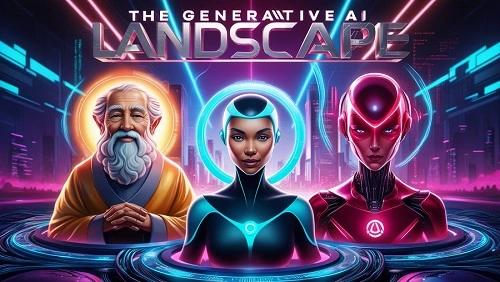
Let’s examine the known titans in generative artificial intelligence closer before getting into the comparisons:
1• ChatGPT (OpenAI)
ChatGPT developed by OpenAI has come to represent conversational artificial intelligence. Trained using a combination of supervised fine-tuning and reinforcement learning with human feedback (RLHF), it shines in producing human-like prose, answering questions, and helping with a broad range of activities. Its adaptability has made it a preferred choice for everything from content creation and customer service to instructional support and personal productivity tools.
• Applications:
ChatGPT finds application in sectors including e-commerce for automated customer care, education for tutoring, and content marketing for drafting and editing.
• Strengths:
Its natural language processing capabilities allow it to maintain engaging and contextually relevant conversations, making it a favorite for conversational agents and chatbots.
• Limitations:
ChatGPT can occasionally struggle with activities demanding in-depth thinking or technical accuracy, including sophisticated mathematical computations, yet being rather flexible.
2.Gemini (Google DeepMind)
Gemini (Google Deep Mind) uses multimodal capabilities to enable seamless processing and generation of text, images, and videos. It is quite specialized in scientific research and multimodal tasks since it blends Google’s strong transformer models with DeepMind’s knowledge in reinforcement learning.
• Applications:
Gemini is especially appropriate for disciplines such scientific research because it supports data analysis, hypothesis testing, and visual representation development. In the creative sectors as well, it is successful since it generates interesting multimedia material by integrating text and image creation.
• Strengths:
It leads in multimodal AI applications since it can combine several data kinds (text, photos, videos), thereby enabling people to work across several formats effortlessly.
• Limitations:
Gemini’s great resource needs and emphasis on particular areas may restrict its accessibility to smaller businesses even if it is outstanding in multimodal activities.
3.Meta-artificial intelligence
Meta artificial intelligence is driven on stretching the possibilities of multimodal integration. Applying metaverse and social platforms, it gives real-time data processing and immersive user experiences top priority. Innovations of Meta AI frequently directly relate to its goal of building linked virtual environments.
• Applications:
It is mostly used in virtual reality (VR), augmented reality (AR), and the metaverse, therefore enabling real-time avatar interactions, environment development, and improved user engagement.
• Strengths:
Meta AI is a necessary tool for creating dynamic, interactive platforms that fit immersive user experiences since of its emphasis on scalability and real-time data processing.
• Limitations:
Its emphasis on the metaverse and social integration suggests it would not be very good in stand-alone artificial intelligence tasks including technical computations or reasoning.
These well-known behemoths each bring special advantages and drawbacks to the generative AI scene, which helps one to make comparisons with new competitors such as DeepSeek R1.
DeepSeek R1 vs. ChatGPT, Gemini, and Meta AI: A Comprehensive Comparison

We must compare DeepSeek R1 across important criteria if we are to really assess it:
1. Accuracy and Reasoning
• DeepSeek R1:
Excels in technological problem-solving, logical reasoning, and mathematical computations—DeepSeek R1 For jobs needing accuracy and ordered reasoning, its emphasis on reinforcement learning helps to deliver context-aware, accurate responses. Professionals in engineering, data science, and quantitative research will find this concentration on reasoning very appealing.
• ChatGPT:
Particularly in difficult, multi-layered issues, ChatGPT can occasionally suffer with mathematical precision or sophisticated reasoning even if it is rather flexible. For broad-minded chores like creative writing and conversation, it is more appropriate.
• Gemini:
Strong in organized thinking, especially for multimodal projects and scientific ones. Gemini has an advantage in research-based applications thanks to its hybrid approach of text, picture, and video capabilities; but, its technological depth may not match DeepSeek R1.
• Meta artificial intelligence:
Although it is good in thinking, its main concentration on multimodal applications usually restricts its technical computation depth. Its strength is in its easy integration of several data kinds, which qualifies more for creative and immersive uses.
• Winner:
DeepSeek R1 is the winner because to its specific design and attention on accuracy, especially for technical and reasoning-intensive chores.
2. Method of Training
• DeepSeek R1:
Uses ground-up reinforcement learning from the bottom up to guarantee adaptability and greatly lower its need on supervised datasets. This approach makes the model scalable and efficient since it lets it learn independently and change its capacity with time.
• ChatGPT:
Trained with Reinforcement Learning with Human Feedback (RLHF), ChatGPT blends supervised fine-tuning with reinforcement learning. Although efficient, this method requires a lot of resources and human supervision as well as great computational capability.
Gemini draws on DeepMind’s hybrid training method, combining transformer-based architectures and multimodal capabilities. Although quite advanced, for smaller companies it has limited scalability and great resource demands.
• Meta AI:
Emphasizing flexibility to several input forms but lacking the specialized depth shown in DeepSeek R1, Meta AI focuses on scalable, generalist training for multimodal integration.
• Winner:
DeepSeek R1 is the winner for its creative and economical training approach, which strikes enhanced capability against scalability.
3. Cost Efficiency
DeepSeek R1:
Designed with affordability in mind, DeepSeek R1 lowers processing expenses thereby democratizing access to sophisticated AI capabilities. Startups, researchers, and companies with tighter budgets will find this to be a quite appealing choice.
• ChatGPT:
Less easily accessible to smaller users or independent developers despite its premium features and strong performance due to expensive licensing charges and computing requirements.
• Gemini:
Gemini incurs expensive expenses due to its advanced training and development, so restricting its availability to businesses and research institues with significant resources.
• Meta AI:
Although Meta provides certain open-source models, their limited capacity means that for more complex jobs customers typically have to depend on more resource-intensive private solutions.
• Winner:
DeepSeek R1 is the winner since its reasonably priced but high-performance design allows more acceptance among several user groups.
4. Versatility & Adaptability
• DeepSeek R1:
Perfect for technical uses and logical problem-solving, it shines in fields such mathematics, programming, and logic. It is less successful, though, in creative or conversational assignments where more generic models like ChatGPT flourish.
• ChatGPT:
Out of the several tasks, including discussion, creative writing, and coding, ChatGPT is most flexible among the compared models. Users looking for a general-purpose AI choose it mostly because of its versatility.
• Gemini:
Perfect for researchers and creative professionals working across several forms since Gemini’s capacity to combine text, graphics, and videos makes it quite specialized in scientific research and multimodal jobs.
• Meta AI:
Focused on multimodal integration for immersive experiences, Meta AI is especially powerful in creative and interactive applications including virtual and augmented reality projects.
• Winner:
ChatGPT for unmatched Versatility & Adaptability. Still, DeepSeek R1 offers unparalleled accuracy by carving out a niche in technical and logical spheres.
5. Open-Source Commitment
DeepSeek R1:
DeepSeek R1 invites researchers, developers, and companies to freely access and alter the model—fully open-source. From independent developers to big companies, this method encourages creativity and makes it understandable to a broad spectrum of users.
• ChatGPT:
proprietary with few publicly accessible substitutes. Although OpenAI has various free-tier choices, lack of complete open-source accessibility limits customizing and testing.
• Gemini:
Completely private and not intending any open-source distribution. Its restricted ecosystem limits usage to Google’s services and associates.
• Gemini:
DeepSeek R1 is the winner since it supports global cooperation and innovation by means of open-source artificial intelligence, therefore fostering creativity.
This thorough analysis notes DeepSeek R1’s special qualities while also appreciating the powers of its rivals. DeepSeek R1 distinguishes itself in the always changing terrain of generative artificial intelligence by shining in cost efficiency, reasoning, and open-source accessibility.
Real-World Applications of DeepSeek R1
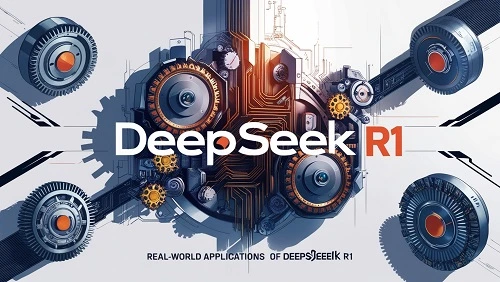
1. Education and Research
DeepSeek R1 is a great friend for teachers and academics since of its sophisticated reasoning capacity. Through mastery of tasks including logical reasoning, coding assistance, and challenging mathematical problem solving, the model creates new avenues in technical education and research. As follows:
• Academic Research:
Saving much time and effort, researchers can use DeepSeek R1 for data analysis, hypothesis development, and literature reviews.
• Educational Tools:
DeepSeek R1 can be included into e-learning systems by teachers and institutions to offer individualized tutoring, clarify difficult ideas, or help students with programming and problem-solving assignments.
• STEM Fields:
DeepSeek R1’s aptitude in logical and technical reasoning makes it very helpful in advancing STEM education, where accuracy and critical thinking rule supreme.
2. Small Companies and Startups
2. Startups and Small Businesses
DeepSeek R1 provides a reasonably priced artificial intelligence solution to improve output and decision-making for companies with limited means. Its possibilities cover:
• Data Analysis:
Startups can apply the approach for trend identification, future consequence forecasting, and insight extraction from big data.
• Process Automation:
Process automation helps to simplify repetitive chores such data entry, report production, and workflow management thereby releasing human resources for more strategic work.
• Problem-Solving:
DeepSeek R1’s reasoning abilities make it a great tool for addressing operational difficulties, streamlining procedures, and inspiring innovation free from significant infrastructure expenses.
3. Developing Countries
DeepSeek R1’s open-source character and low cost are among its most important benefits; these allow companies in underdeveloped countries access to it. This has significant ramifications.
• Democratizing AI:
DeepSeek R1 lowers the cost barrier so that educational institutions, NGOs, and entrepreneurs in areas with limited resources may use artificial intelligence.
• Capacity Building:
Companies can equip local talent to adapt and implement the model for applications particular to their areas, therefore promoting technical development and independence.
• Addressing Local Challenges
From maximizing agricultural practices to enhancing healthcare services, DeepSeek R1’s flexibility can be customized to address region-specific problems in emerging nations.
4. Technical Industries
DeepSeek R1’s strength in logic and reasoning makes it the perfect tool for sectors needing accuracy and technical knowledge. Important application scenarios include:
• Engineering:
DeepSeek R1 helps engineers simplify computations and maximize project results from design simulations to complicated equation solutions.
• Financial Modeling:
Using the model, analysts can create complex financial models, project market trends, and more precisely examine investment possibilities.
• Software Development:
Programmers can use DeepSeek R1 for debugging, creating effective code snippets, or automating repetitive coding chores, hence increasing production.
Challenges and Limitations of DeepSeek R1
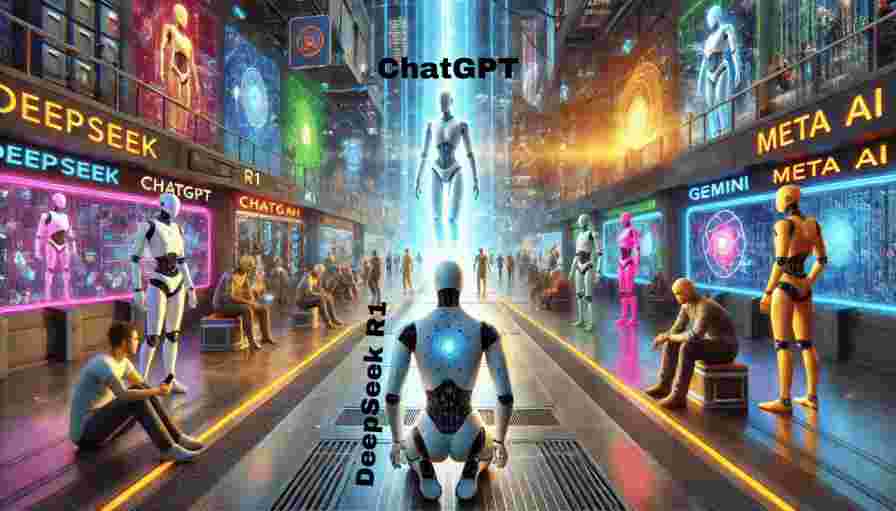
DeepSeek R1 has great promise but comes with certain difficulties as well:
One has little versatility.
1. Limited Versatility
Unlike ChatGPT, which shines in conversational and creative chores, DeepSeek R1 is less flexible. Its architecture gives technical and logical applications first priority, so it could not appeal to consumers looking for an all-purpose artificial intelligence.
2. Brand identification
Dealing with seasoned behemoths like OpenAI and Google calls for major marketing campaigns. Being a more recent arrival, DeepSeek R1 must establish credibility and reputation among worldwide users.
3. Problems in Scalability
Though they empower, open-source projects may run the danger of fragmentation without centralised maintenance and upgrades. Maintaining constant quality and improvements across several systems might prove difficult.
4. Adoption Lag
Getting consumers to move from well-known brands like ChatGPT and Gemini is a challenge. Though its benefits, many companies would want to stick to tried-and-true solutions instead of implementing a rather new strategy.
DeepSeek R1 can establish its leadership in the generative AI scene by overcoming these obstacles by means of effective marketing, community involvement, and ongoing development.
Why DeepSeek R1 is a Game-Changer

Notwithstanding these obstacles, DeepSeek R1 marks a paradigm change in the artificial intelligence sector altering how generative artificial intelligence is created, accessed, and applied. Its special mix of open innovation, affordability, and problem-solving power distinguishes it from more conventional artificial intelligence models.
1. Reasonable AI for Everybody
The cost effectiveness of DeepSeek R1 cuts down obstacles that have historically restricted access to powerful artificial intelligence technologies. DeepSeek R1 is made to be reasonably cost-effective and resource-efficient unlike many proprietary models that demand large computing resources and have expensive licensing prices.
• Broader Audience:
From tiny companies and startups to researchers in underdeveloped countries, a broad spectrum of consumers can now employ innovative artificial intelligence without paying outrageous expenses.
• Empowering Innovation:
Its low cost lets smaller companies and people create without thinking about financial limitations more experimentation is made possible.
• Global Reach:
DeepSeek R1 has the ability to close the technical gap by democratising artificial intelligence, especially in areas with past limited access to AI.
2. Emphasise on solving problems.
DeepSeek R1 fills in technical and intellectual spheres, filling in important voids left by more broad models like ChatGPT. Its architecture gives solving challenging, logical problems requiring great degrees of accuracy and contextual awareness top priority.
• Industry Applications:
DeepSeek R1’s technical concentration fits industries where precision and dependability are non-negotiable from engineering and financial modelling to data research and software development.
• Enhanced Efficiency:
Unlike generalised artificial intelligence models, which may require significant fine-tuning for particular tasks, DeepSeek R1 is naturally optimised for problem-solving, therefore saving users time and effort.
• Complementary Role:
While models like ChatGPT shine in conversational and creative tasks, DeepSeek R1’s technical problem-solving expertise makes it the perfect complement in multi-model approaches.
3. Open Innovation
DeepSeek R1, an open-source model, promotes worldwide cooperation and creativity in ways not possible for proprietary models. This open innovation dedication has broad effects on the AI ecosystem:
• Customisation and Adaptability:
Researchers and developers may easily access and change the model to fit their particular demands, hence generating customised solutions for certain difficulties.
• Promoting Cooperation:
The open-source character attracts contributions from a varied worldwide community, therefore fostering quick developments and increasing the capacity of the model.
• Breaking Monopolies:
DeepSeek R1 challenges the dominance of big tech companies by offering a reasonable substitute for proprietary models, therefore encouraging competition and innovation in the artificial intelligence field.
• Sparking Creativity:
Whether for environmental research, education, or healthcare, developers may experiment and create domain-specific apps free from limitations.
A New Era for AI
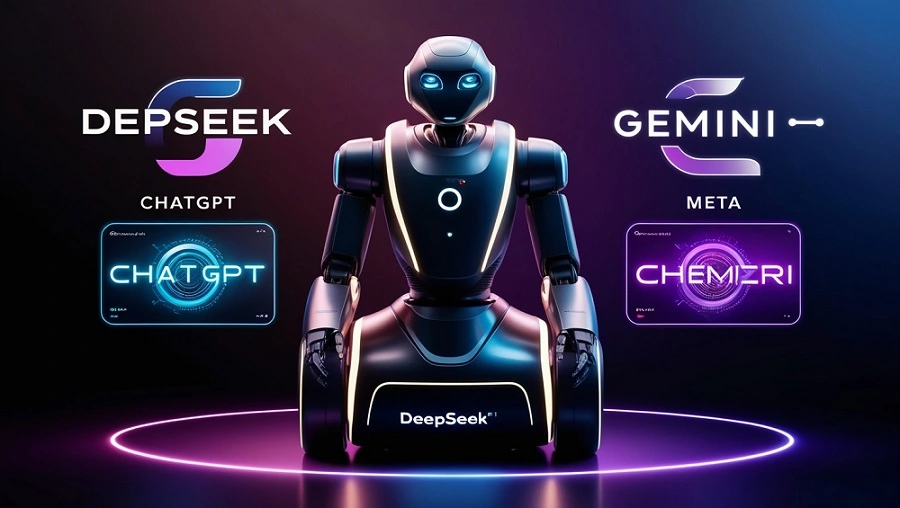
DeepSeek R1’s affordability, technical focus, and open innovation philosophy signal a new era in AI development. By making advanced AI accessible to a broader audience, addressing technical challenges with precision, and fostering a culture of collaboration, it paves the way for more inclusive and impactful AI solutions. This is why DeepSeek R1 is not just another AI model but a game-changer poised to redefine the future of generative AI.
Conclusion: Is DeepSeek R1 Ready to Redefine AI?

Unquestionably, DeepSeek R1 has become a disruptive agent in the AI scene with its emphasis on logic, cost effectiveness, and accessibility, therefore providing a new approach to generative artificial intelligence. Its capacity to close gaps created by more generalised models such as ChatGPT and Gemini sets it out as a strong candidate in technical and specialist fields. Using its advantages, DeepSeek R1 not only questions the supremacy of existing companies but also promotes a more competitive and creative AI ecosystem.
What distinguishes DeepSeek R1?
• Accessibility:
Its cost guarantees that sophisticated artificial intelligence tools are not limited to research labs or big businesses only. Particularly in underdeveloped areas, this democratisation of artificial intelligence technologies could result in more acceptance and innovation.
• Focus on Problem-Solving:
Unlike its rivals, DeepSeek R1 specialises in technical and analytical work, therefore serving sectors and uses that need for accuracy and logical rigour.
• Open-Source Advantage
Being open-source helps to promote worldwide cooperation by enabling developers and academics to personalize and improve the model for their own requirements.
Challenges on the Horizon
Despite its potential, DeepSeek R1 faces significant challenges.
• Establishing Trust:
Being a younger player, OpenAI, Google, and Meta’s well-established reputations must be respected and competed with hard effort.
• Increasing Versatility:
Although its technical emphasis is a strength, broad appeal of it may depend on growing its versatility without sacrificing its basic identity.
• Sustaining Momentum :
Long-term success of sustaining momentum depends on constant updates, user feedback responding, and scalability enhancement improvement.
The Generative AI Race Right Now Is Quite Fascinating
The key question is: Is DeepSeek R1 destined to remain a niche solution for specific use cases or will its special characteristics be sufficient to guarantee its position among the AI giants? Only time will tell. One thing is clear, though: the advent of DeepSeek R1 has already injected thrill into the generative artificial intelligence scene.
DeepSeek R1 opens the path for a future in which artificial intelligence technologies are more inclusive, efficient, and customised to real-world difficulties by upsetting the conventions and supporting competitiveness. The model has the power to transform how artificial intelligence is created and used worldwide—not only as a rival but also as a real game-changer as it keeps developing.
